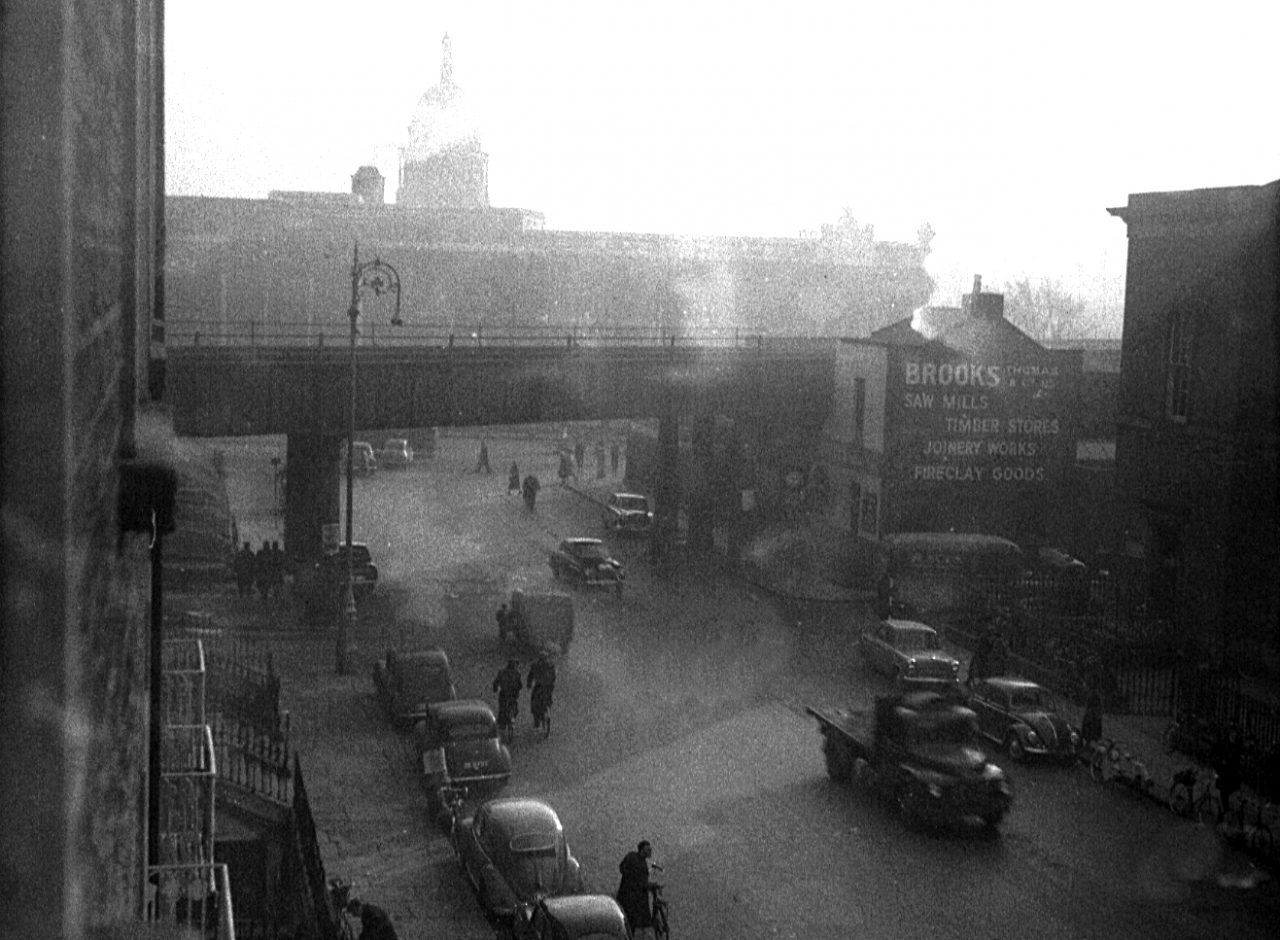Genius loci: 64-66 Lower Gardiner Street
by Mary Ann Bolger
In reviving Campaign, it has been a daunting task for Elaine McDevitt and I to try to follow in the footsteps of the original editors, Bernard Share and Isolde Farrell. But we decided to take it as cosmic endorsement when we discovered that the latest issue of Campaign had been designed in the same building where the first was originally conceived.
Campaign 12 was designed by David Smith and Oran Day at Atelier David Smith. Atelier… the name conjures up a chic little place, awash in Parisian sophistication, smelling of croissants and Eau Sauvage. The reality is a little more local, being the first floor of a Georgian house on Lower Gardiner Street: not a beret in sight.
One day earlier this month, as Oran and I companionably crossed out commas and then put them back in before crossing them out again, I kept feeling that the building was oddly familiar. The French connection put me in mind of Norman Mongan, jazz man, film maker and former ‘French correspondent’ of Campaign who I had bumped into a few years before on this stretch of Gardiner Street. He had reminisced at the time that the advertising agency O’Kennedy-Brindley Ltd had once had premises ‘somewhere along here…’
Later, after putting back in the commas, Oran did some research and discovered that Atelier do indeed now occupy the same building as O’Kennedy-Brindley’s had done from the mid-1950s until 1983: 64-66 Lower Gardiner Street. The discovery was significant, because it was in this building, according to founder ICAD member and former Campaign editor, Bernard Share, that the very idea of ICAD had first taken shape: ‘O’KB’s was the central power house of it, certainly to start with. It was a very creative kind of bunch at the time, a lot of good creative people, like Jarlath [Hayes] of course. And Giles [Talbot Kelly] you know, was a kind of one-man rocket on his own.’
Hayes and Talbot Kelly were both founder members and later presidents of the Institute. With Cor Klaasen (then at Wilson Young) Hayes designed six of the first issues of Campaign while Talbot Kelly was a regular contributor. Interviewed in 2009, Share suggested that he had got involved in ICAD, ‘largely because I was working in O’KB’s, as Billy [Bolger] was, and the idea came more or less from Giles Talbot Kelly, Jar Hayes, and a few likeminded people. Gerry Doherty was also very much involved in it (though he was at O’Keeffe’s); then there were the Dutch people, and then Jimmy Gooch of course.’ James A. Gooch designed the covers of the first eight issues, while Dutch designers Piet Sluis did three and Gerrit Van Gelderen one.
Following our realization of the links between Campaign then and now, we found a collection of photographs that Bernard Share’s creative partner, Bill Bolger, had digitized from old negatives he had uncovered while looking for material relating to ICAD’s fiftieth anniversary in 2008. They show some of the key figures in the early days of ICAD at work in O’Kennedy-Brindley. Neither scans nor negatives have dates on them, but careful examination of beards and hairstyles seems to suggest a date of circa 1958-59, just at the time that ICAD was set up and Campaign was being devised. By Spring of 1960, Jarlath Hayes had moved to join Gerry Doherty at O’Keeffe’s, while Share and Bolger moved to Janus late in 1959. However, the ICAD link at O’KB’s was maintained when Bill Bergin (ICAD’s first president) moved to Gardiner Street as General Manager in mid-1960.
In one of the most evocative pieces in the newly relaunched Campaign, copywriter Eoghan Nolan reflects on the place – physical and metaphorical – of the ‘creatives’ in Irish advertising agencies. He reminds us that ‘inevitably the creative department … ended up in the low-ceilinged servant quarters at the top of the house, or in the basement’ of the faded Georgian premises that housed so many of the ad agencies of the ‘50s and ‘60s. However, the O’Kennedy-Brindley studio seems to occupy the well-lit second floor of number 65, while Giles Talbot Kelly is photographed at a desk in the window of the first floor (distinguished by the wrought iron balcony). If we are to believe the evidence of these photographs, it appears that at least in O’KBs, creatives were literally as well as metaphorically at the centre of the business.
Images:
Bernard Share (seated) and Jarlath Hayes in the studio of O’Kennedy Brindley Ltd., Lower Gardiner Street, circa 1959
Jarlath Hayes at his desk in the studio of O’Kennedy Brindley Ltd., Lower Gardiner Street, circa 1959
Giles Talbot Kelly in the studio of O’Kennedy Brindley Ltd., Lower Gardiner Street, circa 1959
View of the creatives’ office, O’Kennedy Brindley Ltd., Lower Gardiner Street, circa 1959
View of Customs House from window of O’Kennedy Brindley Ltd., Lower Gardiner Street, circa 1959
View of Busáras from window of O’Kennedy Brindley Ltd., Lower Gardiner Street, circa 1959









